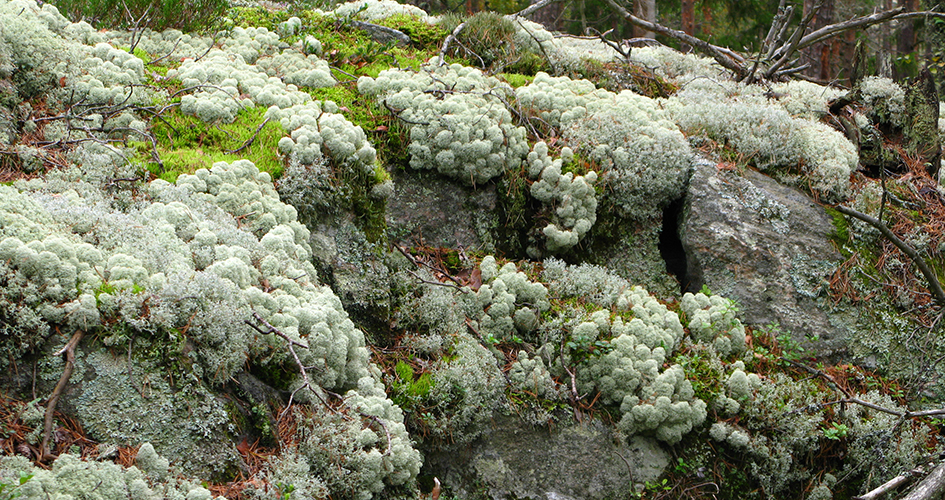 Foto: Stiftelsen Tyrestaskogen
Foto: Stiftelsen TyrestaskogenPlant life
Plant life in Tyresta’s evergreen forest has characteristically limited species diversity. But the variety of mosses, lichens and fungi is great.
Of the 800-plus species of mosses and lichens that cover the ground and trees, perhaps the most prominent are the beard lichen and other lichens that hang from the tree branches. They benefit from the clear air and the slow growth of the trees.
On the ground can be seen beautiful shades of green, shifting between reindeer lichen, knight's plume moss and haircap moss.
On the wetlands grow several species of sphagnum moss in various shades of green, brown and red. Thanks to the area’s many wetlands, including bogs and marshes, sweet-smelling plants such as bog myrtle and marsh Labrador tea grow here, and during the summer months their sweet scents spread through the forest. Also blooming then are the forest’s orchids, including the heath spotted orchid. Species that thrive in ancient forests grow here as well, including creeping lady's-tresses, lesser twayblade and northern ground cedar.
In addition to edible mushrooms such as the chanterelle, penny bun and other Boletales fungi, the long unbroken history of dead wood has made it possible for polypore fungi such as Phlebia centrifuga, Fomitopsis rosea and Phellinus ferrugineofuscus to thrive on tree stumps and fallen rotting logs. On pine trees over 150 years old, the fungus Phellinus pini is often seen extending its brown-coloured slab, and the older spruces are often covered with red-banded bracket fungus, appearing like beautiful orange-brown hooves on the trunk.
Share with your friends
Share this page with your friends on Facebook, X (formerly Twitter), Google+ and e-mail.





